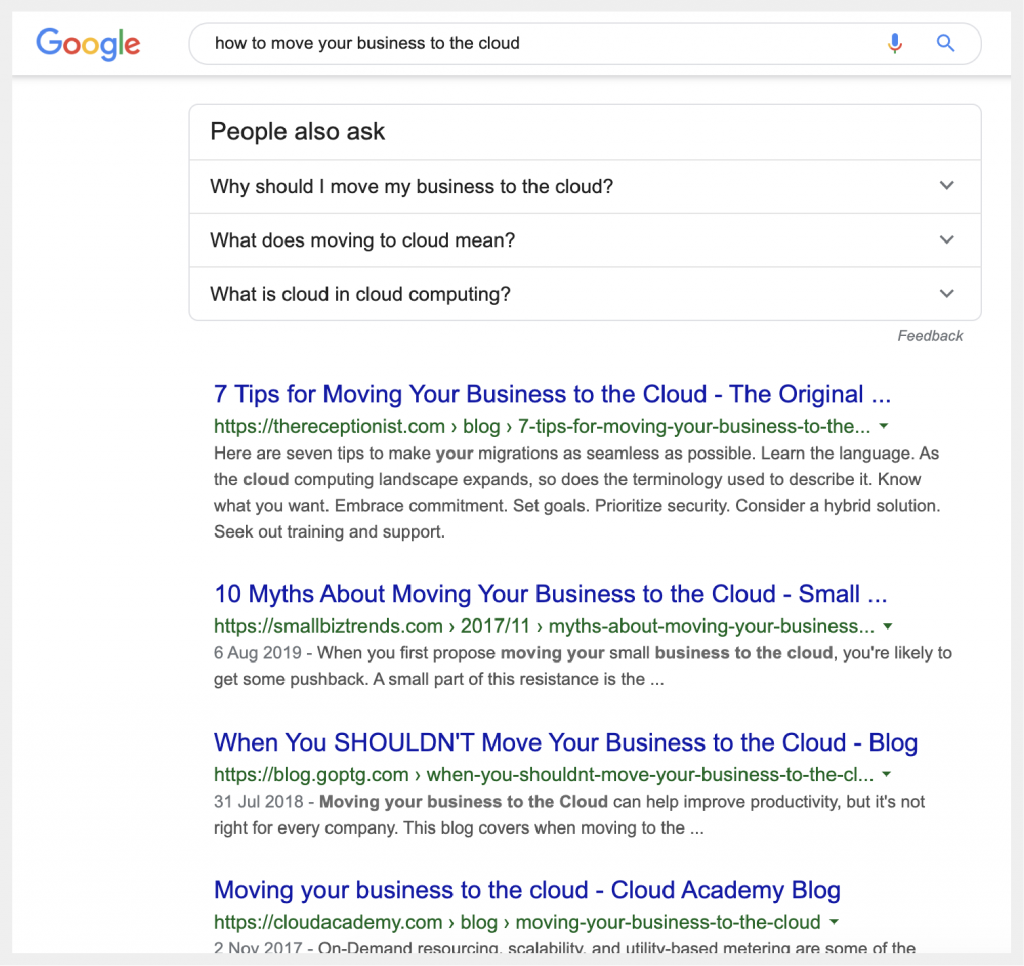It’s easy to fall into the trap of believing that B2B buyers transform into heartless robots the moment they step into the office. That creativity and storytelling are reserved for those lucky guys across the hall firing out “fun” B2C content, leaving us with the with the boring technical dregs.
This sentiment is incorrect. There are more similarities than you think, but there are a unique set of B2B marketing challenges that are very different from the consumer realm, causing many businesses to struggle with their approach.
In business-to-business you’re expected to acquire qualified leads then hand the reins over to the sales team, whereas in B2C marketing you’re responsible for directly generating the sale. The B2B buying process is way more complicated as you’re tasked with promoting products and services which can be highly technical and complex. When you factor in that you’re likely dealing with a web of stakeholders, locked and loaded with their own experience and google research, you can see its hectic nature.
While B2C is a straightforward jump from advertising to purchasing, this tangled nature of its counterpart leaves marketers and B2B business owners in a muddle. It’s difficult to understand where to invest resources for meaningful ROI.
At Fifty Five and Five, we’ve focused on helping B2B businesses overcome these hurdles. Here are our top four B2B marketing challenges, with a little help on how to solve them.
B2B marketing challenges you can solve today:
1. Standing out online
Find any business worth their salt without an online presence and I’ll send you the location of the Philosopher’s stone – and I don’t mean the Harry Potter book. What is difficult, but not quite like turning ordinary metals into gold, is building a strong online presence that puts the megaphone in your hand, helping you rise above the noise in a crowded marketplace.
In this digital age, most people count on the net to supply them with the answers to their problems: whether it’s the recipe to a mean meatloaf, the lyrics to the latest Bieber banger or, more importantly, which service or product best serves their business needs. In marketing lingo, this translates to – get yourself to, or near the top of, the search engine rankings.
As an experiment, google one of the problems your product solves in a question format. For example, let’s say you sell a fantastic cloud-based intranet designed to transform the way businesses collaborate internally. Jeff, the newly promoted CIO of a medium-sized business, tasked with ‘digitally transforming’ the company, fires up Google and types:
“How to move your business to the cloud”

You can see that Google surfaces results filled with businesses that sell products related to the question. But, it doesn’t say “we’ll move you to the cloud with our service!”. Instead, you get engaging and helpful content designed to help people that land on their page.
Businesses with a strong online presence dominate every page number worth checking. I mean, who really gets past page five? The squeakiest wheel gets the grease, as the American proverb goes. However, it’s more than simply shouting the loudest. You need to put together some top-notch content and you need to strategise your way to the top. The good news is that there are steps you can take to climb the ladder on Google and other search engines like Microsoft’s Bing.
Action to take
When it comes to breaking through the noise and standing out online, SEO is the way to go. Developing an SEO strategy that not only optimises your website, but provides long-term, incremental improvements, can positively boost your lead generation. Luckily for you, our experts here at Fifty Five and Five put together an in-depth “how to” guide to help you climb the Google search results ladder.
As we’ve witnessed first-hand, with the help of a consistent strategy you could significantly increase your number of unique visitors per month.
2. Setting your brand apart
Remember when reaching large audiences with marketing campaigns was reserved for big corporations with bigger budgets to burn? Great news: those days are gone.
But staying competitive remains a big challenge for B2B companies. With every yin comes a yang, which in this case means a wider pool of competitors to contend with. Now, even a budding start-up can launch a dynamic marketing strategy through the power of social media, free events and webinars. This is why you need to set your business and your brand apart from the rest. What makes you different from everyone else?
Start by telling your story and humanising your brand. Creativity and storytelling were traditionally seen as a luxury afforded only to B2C brands, but times have changed. The people that interact with those businesses are the same that will interact with yours. This sentiment is backed up by a LinkedIn-commissioned study undertaken by “The Long and Short of it” authors, Binet and Field. Highlighting the importance of brand building to B2B companies, the research shows that tapping into the business buyers’ emotions can help drive growth. Just to be clear, that doesn’t mean make them cry. Although John Lewis pack a pretty decent punch to the heart when Christmas comes around.
Action to take
Build connections and rapport with your target audience through storytelling by incorporating it into relevant and engaging content. Don’t be scared to share your story, it’s one of the things that differentiate you from your competition. The nature of the B2B world puts you in the ring with fight-ready businesses selling products and services similar to yours. Try to humanise your business and brand. You’re more likely to earn the trust of customers when they understand why you do what you do, not just what you do.
Take a look at our writer Alex’s blog, “How to seduce your audience: Rhetoric in marketing and the art of persuasion”, and learn how you can spruce up your content and hit those emotions using language devices.
3. The changing customer buyer journey
The emphasis on inbound marketing has caused a shift in the way buyers consume content, make informed buying decisions and engage with salespeople. Historically, when people needed a product or service, they’d open up the Yellow Pages, speak to colleagues or call the salesperson who’d popped in and dropped off their card.
Now, people consult the internet and educate themselves, with research showing that 70-90% of the B2B buying process is over before buyers reach out to salespeople. Sellers used to knock on the buyer’s door. These days, the roles have switched. You could have the perfect solution to their problem, but that door will remain knock-less without your content reaching them.
There are so many stakeholders, each armed with their own research and opinions, which changes it from a simple transaction to a convoluted process. As shown by the three-quarters of B2B customers who told Gartner that they found their last purchase difficult or complex. So, how do you win their business?
Action to take
A difficult dynamic, with many stakeholders, creates a struggle for buyers. In this instance, the key to earning their business lies in taking proactive steps to simplify this journey. Research has shown that buyers are more likely to feel like they’ve entered a “high-value, low-regret” agreement when they receive information that helps them advance through the buying process. Ensure that you produce engaging content that aids them through the steps, putting the right information to the right people, in the right place, at the right time.
Check out our brand new eBook “A fool-proof guide to content marketing” to get our latest marketing insights, actionable advice and interactive material. It’s designed to help B2B marketers create content that puts them front and centre in the conversation, so you can put your best foot forward and give prospective clients the help they need.
4. B2B lead generation
We looked at how Binet and Field’s study showed that B2B and B2C marketing are more similar than we thought. But, one of the biggest differences is the short sales cycle of the latter. B2C companies markets directly to the customer, who then goes to buy the product, sometimes with just one-click if shopping online with Amazon. It can be a product the customer needs or simply an impulse buy.
“Oh look, three loofahs for the price of two… It’d be rude not to.”
I’m sure loofahs are loved by all. A world without those spongy delights is a world I’d hate to live in. But the B2B buying process is more complex than that. The chances of an impulse buy are slim to none. I doubt anybody looks at cloud migration software and thinks “They look alright, 5,000 of those are going straight in my basket.”
Lead generation in the B2B world requires thought-out marketing campaigns that build personal relationships with prospects over time. The primary method in achieving this, or the starting point at least, usually happens through content, which is why producing relevant and engaging material is so important – which I clearly can’t stress enough.
Action to take
A burgeoning movement that’s gaining traction inside many organisations is the alignment of the sales and marketing teams – aptly given the moniker “smarketing”.
The immediate objectives of these two departments tend to be different, which creates a disconnect, despite both striving to achieve the same big picture goal. Website traffic numbers, email opening targets and marketing leads don’t always convert into sales. But better communication and collaboration can change this and seriously boost business growth.
Sales teams, good ones at least, should know their customers inside and out - and their knowledge should offer valuable insights into customer pain points, challenges and goals. Each of these can contribute to stronger, engaging and relevant content that can aid the curation of successful marketing strategies. It’s mind-blowing that a quarter of businesses describe their sales and marketing teams as either misaligned, especially when you consider this misalignment costs companies 10% or more of their annual revenue.
If you fancy a deep dive into smarketing and what it can do for your business, then check out this blog written by Fifty Five and Five’s smarketing king, our account director Aidan.
The proof is in the platform
Creating engaging content is a sure way to bolster engagement, but the platforms you choose to present your content on are equally important. For instance, thought leadership pieces on LinkedIn help CEOs to establish authority in their field, by sparking community conversations. Over time, regular blogging creates consistency for customers, which in turn can help to establish a brand as reliable and professional. Find out how to amplify your content with effective content marketing.
Cherish your customers
For B2B technology companies, a good reputation is paramount if you want your brand to stand above the rest. Giving a genuine human element to your company can really help turn a faceless company into a personal, relatable and trustworthy brand, placing your organisation ahead of your competitors.
So, one thing to remember is to always follow up with customers.
Send brief emails after phone-calls, summarising the main points that you’ve discussed, and always send ‘thank you’ emails after the deal is complete. Doing this shows customers that you’re in this to build continual business. If you can keep a connection to your customers, then you’re already one step ahead of your competition.
Looking to improve your marketing strategy?
Fifty Five and Five specialise in B2B marketing for tech companies around the world. Get in touch with us today to find out how we can help you multiply your leads with proven B2B marketing tactics.

